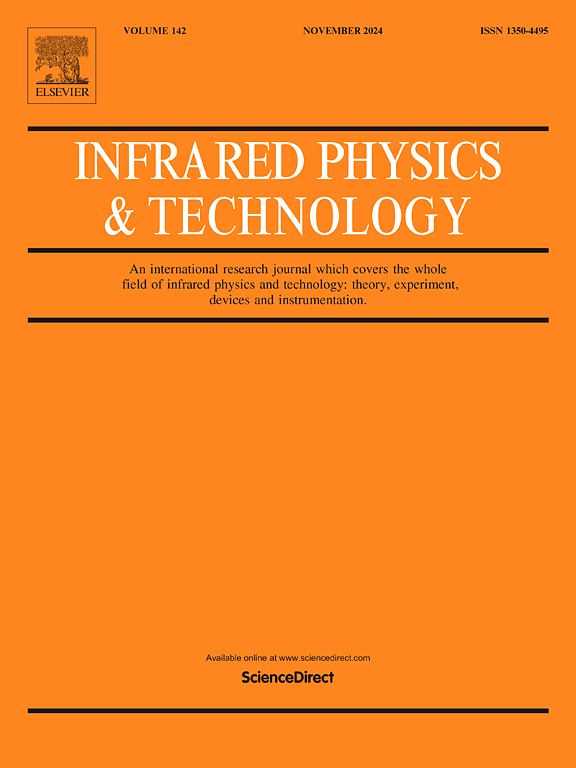LSC-TES: Local spectral curvature-based accurate temperature-emissivity separation in indoor environments
IF 3.1
3区 物理与天体物理
Q2 INSTRUMENTS & INSTRUMENTATION
引用次数: 0
Abstract
Temperature-emissivity separation (TES) is a very interesting technique that estimates both the surface temperature and spectral emissivity from hyperspectral data such as Fourier transform infrared spectroscopy. The TES method is necessary for measuring the temperature of an object to which a contact thermometer cannot be attached. The iterative spectral smoothness TES (ISS-TES) method works well in outdoor environments with strong absorption in downwelling. In indoor environments, ISS-TES cannot work properly because of two factors: almost no absorption in downwelling and thermal equilibrium between an object and its surroundings. This study analyzes the causes of incorrect TES of ISS-TES through mathematical derivations and simulations. Based on these analyses, a novel local spectral curvature-TES (LSC-TES) method is proposed for stable temperature and spectral emissivity estimation in indoor environments. The application of local spectral smoothness instead of global spectral smoothness in ISS-TES on a heated object can mitigate the limitations of ISS-TES. The experimental results obtained using simulations and TELOPS Hyper-CAM LWIR validate the feasibility of the proposed LSC-TES in indoor environments.

LSC-TES:室内环境中基于局部光谱曲率的精确温度发射率分离
温度发射率分离(TES)是一种非常有趣的技术,它可以从傅里叶变换红外光谱等高光谱数据中估计表面温度和光谱发射率。TES方法对于测量接触式温度计不能连接的物体的温度是必要的。迭代谱平滑TES (ISS-TES)方法在下坡吸收强的室外环境下效果良好。在室内环境下,ISS-TES无法正常工作的原因有两个:一是下水管几乎没有吸收,二是物体与周围环境的热平衡。本研究通过数学推导和仿真分析了ISS-TES不正确TES的原因。在此基础上,提出了一种新的局部光谱曲率- tes (LSC-TES)方法,用于估算室内环境下的稳定温度和光谱发射率。利用局部光谱平滑代替全局光谱平滑,可以缓解ISS-TES在加热物体上的局限性。利用仿真和TELOPS Hyper-CAM LWIR获得的实验结果验证了所提出的LSC-TES在室内环境中的可行性。
本文章由计算机程序翻译,如有差异,请以英文原文为准。
求助全文
约1分钟内获得全文
求助全文
来源期刊
CiteScore
5.70
自引率
12.10%
发文量
400
审稿时长
67 days
期刊介绍:
The Journal covers the entire field of infrared physics and technology: theory, experiment, application, devices and instrumentation. Infrared'' is defined as covering the near, mid and far infrared (terahertz) regions from 0.75um (750nm) to 1mm (300GHz.) Submissions in the 300GHz to 100GHz region may be accepted at the editors discretion if their content is relevant to shorter wavelengths. Submissions must be primarily concerned with and directly relevant to this spectral region.
Its core topics can be summarized as the generation, propagation and detection, of infrared radiation; the associated optics, materials and devices; and its use in all fields of science, industry, engineering and medicine.
Infrared techniques occur in many different fields, notably spectroscopy and interferometry; material characterization and processing; atmospheric physics, astronomy and space research. Scientific aspects include lasers, quantum optics, quantum electronics, image processing and semiconductor physics. Some important applications are medical diagnostics and treatment, industrial inspection and environmental monitoring.

 求助内容:
求助内容: 应助结果提醒方式:
应助结果提醒方式:


